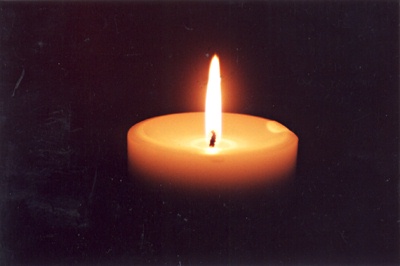All Nonfiction
- Bullying
- Books
- Academic
- Author Interviews
- Celebrity interviews
- College Articles
- College Essays
- Educator of the Year
- Heroes
- Interviews
- Memoir
- Personal Experience
- Sports
- Travel & Culture
All Opinions
- Bullying
- Current Events / Politics
- Discrimination
- Drugs / Alcohol / Smoking
- Entertainment / Celebrities
- Environment
- Love / Relationships
- Movies / Music / TV
- Pop Culture / Trends
- School / College
- Social Issues / Civics
- Spirituality / Religion
- Sports / Hobbies
All Hot Topics
- Bullying
- Community Service
- Environment
- Health
- Letters to the Editor
- Pride & Prejudice
- What Matters
- Back
Summer Guide
- Program Links
- Program Reviews
- Back
College Guide
- College Links
- College Reviews
- College Essays
- College Articles
- Back
Nick and the Candlestick Responsse
In the poem “Nick and the Candlestick” by Sylvia Plath the narrator accounts many separate accounts that work together and fuse one complex, yet meaningful story. This all comes together to represent a story about her life and story about her trials in pregnancy and childbirth. In this poem it creates clever images to represent a certain point. The poem itself is a huge metaphor which allows for you to develop a new understanding and personal feel for this poem. Finally, Plath uses multiple biblical allusions to show how she really feels about this baby.
Since this poem is based off of Plath’s own experiences you must understand that she was severely depressed throughout her life. With her taking her own life the year after this poem was written. She represents these depressive states she had throughout her poem using cleverly crafted images. “The light burns blue”. Typically, the color blue represents sadness or being distraught. Using the next two lines “ Waxy stalactites Drip and Thicken, tears” we can further notice that the light is a candle. We are able to imagine a candle, crying if you will, as it melts burning itself out of existence. As well as the color blue mean sadness it also signifies when the flame is at its hottest temperature. While burning hotter it is also melting itself faster. This signifies how this pregnancy is keeping her alive. How, right now she’s passionate about the baby and excited for it to come into the world. Yet, as soon as the child is born her flame will slowly die out. There will be nothing left to live for. These images are a way to fuse the poem to her own life in a twisted manner. We can all imagine the candle burning out, she just takes it one step further in her meaning.
Plath also has multiple metaphors within her poem that help support the metaphor of the poem as a whole. The metaphor of the whole poem is that of childbirth and the trials with having a baby. “Old cave of calcium Icicles, old echoer” is an important metaphor. Old cave of calcium represents the womb that the fetus is being developed in. Calcium is considered a very biocompatible material to work with because it has the same properties as our bones. Which form the cave that the embryo is kept. As we progress in the sentence we notice that Calcium was being used as a descriptor for Icicles. This unusual break allows for us to focus on the metaphor of a calcium cave for a moment. Till it develops into a metaphor of a cave with calcium icicles. The poem then talks about echoes. In a cave you are able to hear your echo for long instances of time. The “calcium cave” has echoes too. The children, echo the parents for long instances of time. Fading slowly until they become their own person and don’t need an echo of a parent to rely upon.
Finally, Plath uses christian symbols and biblical allusions to represent the Child. The very last stanza of the poem is directed at her child. “You are the one Solid the spaces lean on, envious. You are the baby in the barn”. The child at this point is his own person. Others lean on him, envious of who he is become. He has become a symbol much like Jesus, the other baby in the barn. The poem was crude and immoral up to this point. Now that the Baby is born there is something right in the world. “A piranha Religion, drinking Its first communion out of my live toes.” This is earlier in the poem but it shows the opposite side of the pregnancy. The mother is the sacrifice. She has no choice but to let it happen at this point, there is no stopping it. She has become a lamb to the slaughter. Raised for the purpose of having this child, as mary’s was to have Jesus.

Similar Articles
JOIN THE DISCUSSION
This article has 0 comments.

We were asked to write a response on the symbolism of Nick and the Candlestick, a poem by sylvia plath. This is my response.